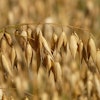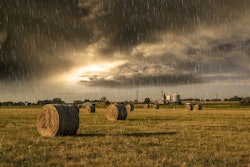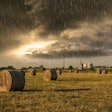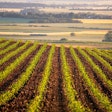Elise Schafer, Editor of Feed & Grain: Hi, everyone, and welcome toFeed & Grain Chat. I'm your host Elise Schafer, editor ofFeed & Grain. This edition of Feed & Grain Chat is brought to you byWATT Global MediaandFeedandgrain.com. Feedandgrain.com is your source for the latest news,product and equipmentinformation for the grain handling and feed manufacturing industries.
Today I'm joined on Zoom by Darin Newsom,barchartsenior market analyst. He's here today to give us his analysis on 2023 crop production and the grain markets. Hi, Darin, thanks for joining me today!
Darin Newsom, barchart Senior Market Analyst:Hi, Elise. It's good to visit with you.
Schafer:Yes, absolutely. Now, in July,barchart increasedits corn yield estimates and decreased soybean projections. What factored into those adjustments, and are they still tracking the same today?
Newsom:Yeah, it's interesting. You know, so much of the industry saw much the same thing. When reports and these estimates started coming out in early, or the first half of July, much of the U.S. was still in a drought situation. We hadn't seen thefull effects of the of the switch from La Niña to El Niñokick in yet. But as the month of July progressed, and we got into August, so basically from midpoint of July through the midpoint of August, we've seen better rains across much of the Plains and Midwest.
We saw thelatest estimatesfrom barchart came out just under 178 bushels/acre and corn for national average yield. So that's a pretty solid number and the soybeans are still struggling a little bit because they are still having some areas that have some drought affecting the soybeans, or a bit more than August crop.
因此,仍有一些问题,just under 51 bushels/acre. There's still some questions about what soybeans might yield, but there seems to be a growing acceptance thatcornis going to probably be okay, for the most part.
Schafer:So what are youryield predictionsfor global competitors of U.S. grain like Brazil and Argentina?
Newsom:我们现在处理的是什么,同样,如果我们want to use a template from what can happen with that weather switch from La Niña to El Niño, we don't have to look any further than than what happened in Brazil. They were expected to have a good crop in 2023. And they did. This past January, February, March as harvest was going on, had what turned out to be record crops in some cases.
So, what we're dealing with now is most of the exports being made globally — they're coming out of Brazil at this point. They're moving a lot of corn and moving a lot of soybeans, in fact, they have displaced — at least the projections are showing — they'vedisplaced the U.S. as the number one exporter to the world at this point, something that the U.S. just hasn't seen in a long time.
Schafer:Now, are there any circumstances or anomalies on your radar that could potentially impact U.S. yields this fall?
Newsom:Yeah, as far as corn goes, I don't really see much of a change coming, as far as estimates and these sorts of things by the time we get to harvest, and I would not be surprised to see the combines start rolling over parts of the U.S. here in August. And so, we're almost to harvest, so I don't look for a lot of changes.
What could happen as we've seen it before, I think a few a couple of years ago, we saw a derecho move across the Midwest, where they just knocked most of, or a lot of, the crop in Iowa flat. So, we have to be careful of those sorts of anomalies.
As far as soybeans, as I said earlier, they're still up in the air. There's still a great deal of question about what production could be for U.S. soybeans if the weather forecast turned out to be right and we see it very hot and dry into August. I think that could continue to take some of the yield potential off the 2023 U.S. soybean crop.
Schafer:So what kind of implications does your analysis have forgrain merchandisersand originators in the United States?
Newsom:The biggest thing that my analysis is looking at right now is what does the commercial side of the market do. You know, it's kind of a circular situation where I'm looking at what the merchandisers are telling me through their positioning and futures spreads andbasis, and then I'm relaying that and then some of the merchandisers are reading that analysis, and so what we can see is, we've had the corn market indicate that the commerce side — the merchandisers and users, exporters and so on — have grown more comfortable with 2023 production.
And we can see that in the way the futures spreads or the way the prices of the different contracts line up in the 2023-24 marketing year. They're not as bullish as they used to be, they've moved to more of a neutral stance. And again, this has to do with we don't have a lot of supplies coming out of the old crop year. So, even if we have large production, it's going to add, it's going to make a more comfortable available stocks-to-use situation, but not as burdensome as what we've seen in some years past.
On the soybeans it's still the opposite of that. We still have a bullish view, the merchandisers still have a bullish view of soybeans, and again, it comes down to fewer acres. And we knew that going back to last February that these corn had bought acres away from beans. So we've got fewer acres planted here in the U.S. And now if we have a hot and dry August and taking the top off the yield estimates as well, then we're going to have still the possibility of a smaller crop than what was expected.
You asked earlier about Argentina. Argentina had a bad crop due to weather and they're the world's number one soybean meal exporter. So, if the U.S. crush for soybeans picks up as expected in 2023-24, we're going to see more bean oil use domestically in the world, continuing to search for more soybean meal to replace what was lost out of Argentina.
Schafer:Well, thank you so much for your analysis today, Darin.
Newsom:I really appreciate you having me on and I enjoyed our conversation.
Schafer:Yeah. Likewise. That’s all for today'sFeed & Grain Chat. If you'd like to see more videos like this, subscribe to ourYouTubechannel.Sign upfor the Industry Watch daily eNewsletter or go tofeedandgrain.comand search forvideos.
And if you'd like to hear more insights like Darin provided today, be sure to check out barchart'sGrain Merchandising and Technology Conferencecoming up this September. Thank you again for joining and I hope to see you next time!






















